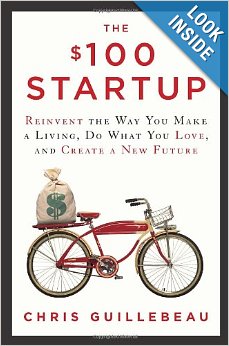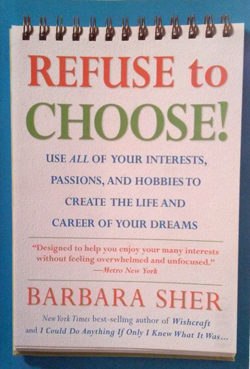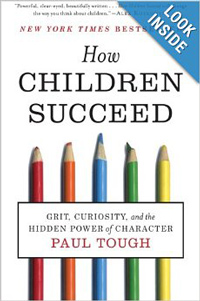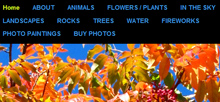
My bookshelf
 – What I’m currently reading
– What I’m currently reading
For the past couple of months, I’ve been reading several books at once. I usually don’t do that but since I’ve been wanting to read books on writing and business, as well as novels, I’ve figured the mix would allow me to learn about various subjects all at once, rather than being stuck in one genre for a long time.
The $100 Startup: Reinvent the Way You Make a Living, Do What You Love, and Create a New Future by Chris Guillebeau. I’m almost done with this book and I’ll share my thoughts in my next update.
Writing Picture Books: A Hands-On Guide from Story Creation to Publication by Ann Whitford Paul. This book is so simple and so good, I’ll probably purchase my own copy once I’m done with the library version.
Show Me a Story!: Why Picture Books Matter: Conversations with 21 of the World’s Most Celebrated Illustrators by Leonard S. Marcus. A very insightful book so far, in which illustrators share their life stories and explain how they became children’s book illustrators.
Becoming A Writer by Dorothea Brande. This book was first published in 1934 and I understand every aspiring writer should read it, so we’ll see.
– What I recently finished reading
 Hotel on the Corner of Bitter and Sweet by Jamie Ford. I wish this book didn’t constantly switch between the past and the present, especially since it made the beginning of the story feel a lot slower than it could have been. That being said, I really enjoyed this book. It shows how friendship and love can be affected by war, racism, xenophobia, fear, and pure hatred. 12-year-old Henry and Keiko don’t see their different ethnic backgrounds as a barrier to their friendship, but the rest of the world does, including Henry’s Chinese father, who takes his hatred of Japanese people all the way to his grave, even if it means breaking his son’s heart over and over. This is one of the sweetest love stories (and historical novel) I’ve read in a long time and I highly recommend it.
Hotel on the Corner of Bitter and Sweet by Jamie Ford. I wish this book didn’t constantly switch between the past and the present, especially since it made the beginning of the story feel a lot slower than it could have been. That being said, I really enjoyed this book. It shows how friendship and love can be affected by war, racism, xenophobia, fear, and pure hatred. 12-year-old Henry and Keiko don’t see their different ethnic backgrounds as a barrier to their friendship, but the rest of the world does, including Henry’s Chinese father, who takes his hatred of Japanese people all the way to his grave, even if it means breaking his son’s heart over and over. This is one of the sweetest love stories (and historical novel) I’ve read in a long time and I highly recommend it.
The Tiger Rising by Kate DiCamillo. DiCamillo is a master of storytelling and character development for children and she doesn’t dumb down the difficult issues her characters are facing. In The Tiger Rising, Rob is still suffering from the loss of his mom, while newcomer Sistine is in self-denial about her father’s relationship with her after having an affair and her mom moving way with Sistine. I love how DiCamillo always uses adults as supporting characters, showing how children can find the support they need in the least expected people. This is a very quick read and I recommend it if you’re looking for a great story.
The Shining by Stephen King. King is one of my favorite writers and the master of horror for a good reason. This book is proof that he earned that title early on in his career. What a spooky, chilling, horrifying tale of a hotel taking possession of its guests year after year. I’m not sure what I found scariest: the potential ghosts inside the hotel, the thoughts penetrating the characters’ minds to control them and make them do specific things, the idea of cabin fever, or the moving hedge sculptures in the garden. I usually read at night before going to sleep but this book is a bad choice if you’re tired and need the zzzzz. It may keep you up all night!
Don’t Pigeonhole Me! by Mo Willems. I’m a big fan of Mo Willems as a children’s book author/illustrator so I was glad to find a book that covers the past 20 years of his life and his emergence as an artist. Every year Willems has put together a little sketchbook featuring his doodlings. Some of them are just silly and others were actually the inspiration for a few children’s books. The content of this book is definitely aimed at adults, not his youngest fans. All in all, it reminds all of us that doodling is a great activity we should do more of.
Daily Rituals: How Artists Work by Mason Currey. This is an interesting collection of daily rituals of famous artists, mostly writers and painters. As different as these rituals are, they seem to have the same items in common: these artists found a daily routine that worked for them. They worked at the time of the day or night they felt most productive, whether it was a couple of hours or 10. Some of them relied on drugs to function but most actually lived pretty normal lives, with little outside entertainment. For many of them, their artistic career came first, often at the expense of their spouses and/or children. You can sense the author did a lot of research to gather a bit of information on so many artists, but he didn’t have much to write since most of the content is copied from other sources, whether personal diaries, letters or magazine articles.
Goals! How To Get Everything You Want by Brian Tracy. If you want to set goals for various areas of your life (career, health, finances and personal), this is a good book to use. Tracy tells you step by step what to do to help you create these goals and how to get them accomplished. Breaking down your goals into smaller steps and working on them every day are just a few pieces of advice you’ll find in this book. Goal setting can be a challenge and this book is inspiring and motivating.
The Power of Focus by Jack Canfield. If you’re looking to bring more focus into your personal, work and financial life, this book can offer a lot of guidance. Full of real life examples for everyday people who managed to turn their lives around, as well as many footnotes from the three authors, this book can be very helpful in identifying the reasons why you may be struggling in some areas of your life. Does this book answer all questions? Probably not, but it’s good enough to get you thinking and going, and hopefully know how to find help for the steps after that. Definitely worth your reading time.
I recently read several books on procrastination and getting things done. Some of them are definitely better than others at helping you identify the specific reasons why you may procrastinate and give you some advice to avoid procrastination. Overall, I think the people at Nike figured it out a long time ago. “Just do it” is the best advice you can follow to get things done, whether you enjoy the activity or not.
The Art of Procrastination: A Guide to Effective Dawdling, Lollygagging and Postponing by John Perry. This is a funny book on procrastination, written by a philosopher who happens to be a procrastinator. Full of quirky anecdotes and real-life examples, this book won’t tell you how to solve your procrastinating habit, but it will at least help you admit you may have a problem, and point out a few tricks. These include breaking things down the Kaisen way (many small steps), and making a list of everything you need to do and NOT do (e.g. not browse the internet when you’re supposed to be working on something important). It even recommends patting yourself on the back every time you get something crossed off your list, and associating yourself with non-procrastinators to make sure you get the most important things done. Above all, John Perry recommends you don’t let your procrastinating habit get in the way of enjoying life and stressing over deadlines you could easily avoid. In the end, happiness is key.
Time Power: A Proven System for Getting More Done in Less Time Than You Ever Thought Possible by Brian Tracy. A very useful book on how to regain lost time for productivity every day, from identifying and avoiding timewasters, to improving efficiency to creating a schedule and sticking to it. Plan your work and then work your plan is the way to go, so you spend most of your time on the activities that will get you when you want to go. This book includes tips of goal setting, thorough planning and execution. It’s worth spending a few hours reading.
The Procrastinator’s Guide to Getting Things Done by Monica Ramirez Basco. This is a simple little book on identifying which type of procrastinator you are, identify the reasons why you procrastinate and how to change your behavior and avoid procrastination. The identification process is well explained but I think this book doesn’t cover strategic solutions in enough detail. Brian Tracy’s “No Excuses!” book offers a lot more hands-on, practical solutions to procrastination, in my opinion.
The Now Habit: A Strategic Program for Overcoming Procrastination and Enjoying Guilt-Free Play by Neil A. Fiore. A good book on how we can fight procrastination one day at a time by noticing why we procrastinate and when, setting up new habits, finding a schedule that works for us, and measuring accountability. It even has a chapter on relaxing and how to find the flow. I’m not sure that really works for everyone but it could be worth a try for some people.
Procrastination: Why You Do It, What To Do About It by Jane B. Burka. If you’re looking for a book that explains the various psychological reasons for procrastination, this is probably a good choice. Full of theory and relevant examples to help you identify the reason(s) why you may procrastinate, it then goes into a solution to make things happen, including some exercises you can do every week to break the cycle. Examples include time management skills, strict scheduling breaking large tasks into smaller tasks, and finding the times of the day you’re most productive.
The Procrastinator’s Handbook: Mastering the Art of Doing It Now by Rita Emmett. If you’ve never read a book on how to stop procrastinating and how to plan better, this is a good start. If you have read on the subject, this book won’t tell you what you already know. You need to identify all the times you procrastinate and the reason(s) why. Setting goals and planning the steps to reach them will help, as well as declutter your environment. This book includes a lot of concrete examples and quotes to motivate you. I recommend reading Brian Tracy’s book No Excuses!: The Power of Self-Discipline for more thorough and helpful advice on the subject.
 – What I think I’ll read next
– What I think I’ll read next
The Candymakers by Wendy Mass. Four 12-year olds are inviting to a candymaking factory to enter a contest and create the most delicious candy. If this sounds a bit like Roald Dahl’s Charlie And The Chocolate Factory, it’s meant to be. I can’t wait to read this middle grade story!
My kids’ bookshelf
I’ll skip my kids’ bookshelf this week and will focus on that exclusively in my next WWW Wednesdays post. We’ve read some excellent children’s books recently and I think they deserve their own post.
If you enjoyed reading this post and would like to receive future postings, please enter your email address and click the Sign Up button at the top right of this page. Thank you for reading!
 Do you ever have one of those light bulb moments? I recently did, and it’s probably one of the best things that’s happened to me in years. A few weeks ago I stumbled upon an article from the UK magazine Psychologies called What do you do when you want to do everything? Of course the title intrigued me and as I kept reading, I kept thinking, yep, that’s me alright. The article goes on to mention a book by Barbara Sher of the same title, which happens to be sold in the USA as “Refuse To Choose“. I decided to buy right after reading this article. As I started reading it, nodding my head in agreement, I had an epiphany: I am a scanner, and there’s nothing wrong with me!
Do you ever have one of those light bulb moments? I recently did, and it’s probably one of the best things that’s happened to me in years. A few weeks ago I stumbled upon an article from the UK magazine Psychologies called What do you do when you want to do everything? Of course the title intrigued me and as I kept reading, I kept thinking, yep, that’s me alright. The article goes on to mention a book by Barbara Sher of the same title, which happens to be sold in the USA as “Refuse To Choose“. I decided to buy right after reading this article. As I started reading it, nodding my head in agreement, I had an epiphany: I am a scanner, and there’s nothing wrong with me!













































